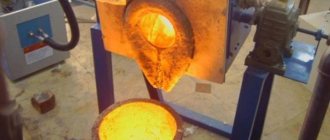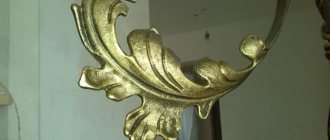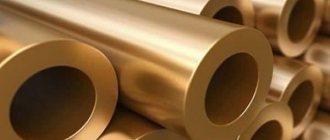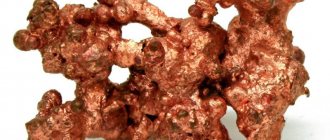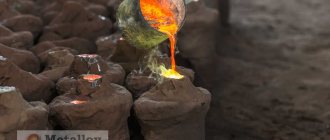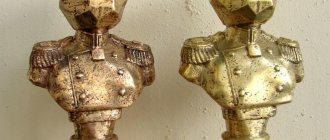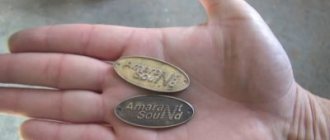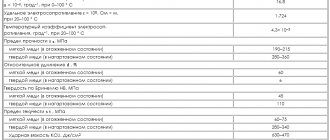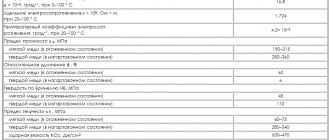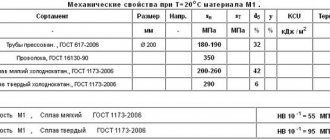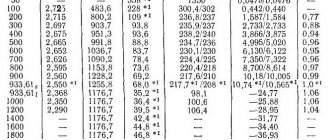Copper and bronze, also known as the “red metals,” may look similar at first glance, but they are actually completely different metals.
Copper and bronze are radically different in chemical composition, areas of use and properties. Copper is a pure chemical element and natural mineral that is found primarily in soil and, in smaller quantities, in water. In contrast, bronze is an alloy that contains copper as the main component, with tin and other metallic and non-metallic compounds. There are bronze alloys of various types, with different compositions; so different alloys have different properties and applications. Copper is an excellent electrical and thermal conductor. This metal is used in various fields. However, the key difference between copper and bronze is that copper is a pure chemical element and a natural mineral, while bronze is a metal alloy.
What is copper?
The word "Copper" comes from the Latin word "cuprum". It is a chemical element with atomic number 29 and the letter symbol "Cu". Copper is a ductile metal with very high electrical and thermal conductivity. Copper, due to its excellent electrical and thermal conductivity, corrosion resistance and good strength, is used to produce a wide range of industrial products. For example, copper is widely used as a conductor of electricity and heat, a building material, and in the production of various metal alloys. Pipes and fittings are primarily manufactured using copper due to its corrosion resistance.
There are many types of copper, which can vary in the amount of impurities they contain. Oxygen-free grades of copper are used in products that require ductility and conductivity.
One of the most important properties of copper is its ability to fight bacteria. After extensive antimicrobial testing by the Environmental Protection Agency, 355 copper alloys, including many brass alloys, were found to kill more than 99.9% of bacteria within two hours of contact. It is worth noting that the normal tarnishing of copper over time does not reduce its antimicrobial effectiveness.
Copper was one of the earliest metals discovered by man. The Greeks and Romans turned it into tools or jewelry, and there is even historical evidence that copper was used to sterilize wounds and purify drinking water. Today it is most often found in electrical products, such as wiring, due to its ability to efficiently conduct electricity.
How to sell scrap bronze profitably, price per 1 kg at collection points
Most people associate the word “bronze” with objects of art and interior design:
- monuments;
- busts;
- antique candelabra;
- antique figurines;
- bells.
But bronze alloy , which is based on copper, is used not only in the artistic industry, but also in industry.
Before you sell bronze scrap, you should familiarize yourself with the types of this alloy, find out where it is used and how it is assessed at collection points. With such information, it is possible to get the maximum benefit from the transaction.
Prices and conditions of admission
Bronze scrap is a low-melting material that does not require a complex technological process for processing. Scrap is accepted continuously; the cost depends on the type of bronze scrap and its chemical composition.
Tin bronze has the highest price, since tin is an expensive non-ferrous metal, the cost of copper is several times higher.
According to GOST, the category of bronze scrap includes 15 items . Each company defines its own criteria when evaluating metal waste, but they are all united by the desire to obtain this type of non-ferrous scrap metal by any means.
Main types when assessing bronze:
- lump scrap;
- scrap mix;
- shavings;
- bronze products (casting).
Since bronze is very similar to brass, the main component of which is also copper, the alloy is analyzed using a special spectrometer.
Also, the composition of the alloy is determined using chemical reagents .
Large volumes of waste are more expensive.
Art and interior items are priced individually.
If the weight of bronze is more than 100 kilograms, it is possible for a specialist to visit the waste storage site to conduct an assessment. For non-cash payments, 10% is added to the accrued amount.
Below is information about how much bronze costs; average prices for 1 kg of scrap are given in table form:
| Scrap | 0-50 kg | 50-100 kg | 100-500 kg | From 500 kg - 1t |
| Scrap bronze - piece | 115-204 rub. | 170-215 rub. | 175-215 rub. | 190-228 rub. |
| Scrap mix | 180-184 rub. | 180-215 rub. | 180-215 rub. | 210-215 rub. |
| Shavings | 65–100 rub. | 100-170 rub. | 100-170 rub. | 110-180 rub. |
| Art and interior items | Price is negotiable | Price is negotiable | Price is negotiable | Price is negotiable |
Lump scrap includes bronze items with permissible contamination of up to 3% , a piece weighing no more than 100 kg .
Usually this:
- industrial waste,
- parts of super-power cranes,
- turbines
The main requirement is a homogeneous alloy composition of the entire batch.
Scrap with contamination up to 10% belongs to grade 2 ; scrap fragments can be made of various alloys.
Wood chips , industrial waste, in which the contamination is no more than 2%, are rated no less highly.
They are excellent for recycling without prior fractionation.
Of particular importance in the assessment of mixed alloys is the purity of the metal being submitted .
This indicator for bronze is not specified in GOST; it is agreed upon between both parties: the receiver and the client.
Many people are interested in the question - what is more expensive: copper or bronze? Having analyzed the average prices for receiving non-ferrous metal, you can find out that individual components of the classic alloy are more expensive than bronze itself - copper from 260 to 300 rubles per kilogram, and tin is even more expensive. And the price for scrap bronze does not exceed 215 rubles per 1 kg.
You can hand over bronze scrap to any non-ferrous scrap metal collection point.
Due to the similarity of the metal to brass, inspectors who do not use spectral analysis may mislead you into thinking that the metal is brass. The cost of this metal is less. To prevent this from happening, it is important to know the characteristic differences between these alloys.
How to distinguish bronze from brass:
- The color of the bronze alloy is darker than that of brass and has a characteristic reddish tint.
- Scratches remain on brass products due to mechanical impact .
- The fracture of the products differs in structure and color. Brass has a light-colored and fine-grained fracture surface. Bronze has a dark-colored fracture with a coarse-grained texture.
- Brass is never used in shipbuilding, since sea water has an aggressive effect on it.
Brass and copper are even more similar. Read more about how to distinguish them in a separate article.
To make it more profitable to hand over bronze scrap, it is preferable to agree on the handing over of the alloy with an organization that collects metal waste legally.
The following companies have metal analyzers
- spectrometers;
- steeloscopes;
- laboratories for chemical analysis.
When an appraiser visits a client to inspect scrap, an express analysis of alloys is possible, which will affect the objective value of the metal.
If a sufficient amount of metal waste has accumulated, then a large company will undertake the delivery of scrap to one of its collection points.
for legal entities include:
- preparation of documents for disposal in compliance with all legal regulations;
- free dismantling of bulky structures;
- collection of recyclable materials using your own special transport.
But it is not always possible to find such a company everywhere and not always.
If you turn to private traders involved in collecting scrap metal, the price will be more modest, but there will be no transportation costs. Don't forget to ask them about their license.
In any case, the scrap metal will go to its intended destination, namely to a processing plant, where it will be used to create secondary metal for the needs of metallurgy and other industrial sectors.
Recycling scrap bronze is saving copper natural resources .
It is impossible to imagine the life of a modern person without the use of metals. Landfills of rusting metal trash not only pollute the environment, but also lead to the gradual depletion of natural resources.
This situation is especially true with copper-containing ores and minerals that are not replenished by nature.
Selling scrap bronze is beneficial for people and the planet .
If, after reading the article, you change your mind about handing over scrap bronze, then watch the video that will help you melt it down yourself:
What is bronze?
Bronze is a metal alloy that contains copper as the main component and about 12 percent tin. Some other metals and non-metals can also be included in its composition, depending on the requirements, to obtain the desired properties. The most commonly added metals are aluminum, manganese, zinc or nickel. Examples of other components are silicon, phosphorus or arsenic. The addition of various metallic and non-metallic compounds results in a wide range of bronze alloys with varying properties.
Visual definition
With a high content of zinc or tin, copper alloys are quite easy to distinguish by color . In brass, the color shade due to the presence of zinc shifts from pink-red copper to golden-yellow tones and pure gold.
Bronze with a high amount of tin acquires a light silvery color, and with a small amount of alloying additive it remains closer to copper with its red tones. But a visual comparison of brass and bronze is almost impossible when the amount of impurities is in the range of 15-35%. With this composition, the color shades of both alloys are completely identical.
In practice, compounds with high additive content are quite rare. Therefore, we can say that brass has a golden-yellow hue, and bronze is reddish, or the alloys are very similar to each other.
Composition of copper and bronze
Copper is naturally present in soil as a mineral at a concentration of 50 parts per million. The main source of copper is copper sulfide (CuFeS2), which is also known as chalcopyrite. But it exists in its pure form as a natural mineral, not combining with other elements; this is "native copper". There are 29 isotopes of copper, of which only two types (63Cu and 65Cu) are stable, while the other isotopes are radioactive.
Bronze is a metal alloy containing copper (Cu) as the main element, the second important element being tin (Sn). Their percentage varies depending on the properties required, but most often the alloy contains about 12% tin and 88% copper. Their percentage changes slightly with the addition of other metals and non-metallic compounds.
There are many many bronze alloys and they have different properties depending on their use.
Main types of alloys:
- Commercial bronze: copper (90%), zinc (10%);
- Architectural bronze: copper (57%), zinc (40%), lead (3%);
- Plastic bronze: contains significant amounts of lead (Pb) to improve ductility;
- Phosphor bronze (or tin bronze): copper, tin (0.5% to 1.0%), phosphorus (0.01% to 0.35%);
- Aluminum Bronze: copper, aluminum (6% - 12%), iron (6% -max), nickel (6% -max);
- Silicon bronze: copper, zinc (20%), silicon (6%).
About copper, brass, tin, bronze and other alloys.
Due to my passion for jewelry, I became actively interested in what we make everything from - what kind of metals are they? what properties do they have? What is the gold standard in karats? What kind of turquoise do I buy? What types of fakes are there? etc. I thought that this is interesting not only to me... so I will slowly post it all here...
(all information is “pulled” from the Internet from different sites)
—————————————————————————————————————
Copper is a metal designated in the periodic table of chemical elements as Cu (Cuprum). Copper is one of the first metals that people began to use in ancient times. As a result, today all copper deposits have been selected, and it is mined from low-grade ores.
Man discovered copper before all other metals except gold. Even in prehistoric times, copper was used by Stone Age people.
Copper is found in a fairly pure state - in nuggets and grains of metal without impurities. Perhaps the first time a person picked up these nuggets from the ground was because they were beautiful. Then the man made a great discovery, finding out that these strange reddish stones can be given any shape. This was a simpler method of making weapons and knives than chipping flints.
Much time passed, and other people discovered that they could melt red stones and make cups and jugs from the molten mass. Then people began to mine copper and make all kinds of devices and utensils from it.
For thousands of years, copper remained the only workable metal because gold was not only too rare to be considered, but also too soft for practical purposes. Copper tools may have been used in the construction of the great pyramids of Egypt.
When bronze (an alloy of copper and tin) was discovered, even more copper was mined. But after the discovery of iron, copper began to be used in small quantities, mainly by peoples at a low level of civilization, until the era of electricity arrived. Since copper is a good conductor of electricity, it is widely used in modern industry.
Very few people have seen pure copper and are unlikely to recognize it if they see it. It is a shiny silvery substance with a slight pinkish tint, which turns reddish in color as it comes into contact with air. The copper we typically see is reddish-brown in color. This is the color of copper oxide, which is formed as a result of the interaction of metal with air.
Most of the world's copper exists in combination with other substances from which it must be separated before use. It is often adjacent to sulfurous substances, which can also be combined with iron and arsenic, which makes it difficult to purify copper.
Copper has some other advantages, besides the fact that it has outlived many other metals. It has high strength, but nevertheless is flexible enough that it can be stretched and given any shape through processing. It conducts heat no worse than electricity. Copper can be carved and engraved. But it's not easy to break. It can also be used to create alloys such as bronze and brass by combining it with other metals.
———————————————————————————————————————-
Brass (yellow copper) is one of the most useful and most commonly used alloys. Its composition varies over a fairly wide range depending on its purpose, but the main components - copper and zinc - are usually found in a ratio of about 2 parts copper and 1 part zinc. (Although zinc was discovered in the 16th century, brass was already known to the ancient Romans and was prepared by them by reducing the smelting of copper (or oxygen copper ores) with galmay, which was believed to have the property of turning copper yellow.This method of preparing brass was also practiced in the Middle Ages and survived until our century, but is now completely left). Brass sometimes contains trace amounts of tin and lead. Brass is harder than copper and therefore more difficult to wear; it is very malleable and viscous and therefore easily rolled into thin sheets, flattened under the blow of a hammer, drawn into wire or stamped into a wide variety of shapes; it melts and casts relatively easily at temperatures below the melting point of copper. Although the surface of brass, if not varnished, turns black when exposed to air, yet as a mass it is more resistant to the action of the atmosphere than copper. Finally, it has a beautiful yellow color and polishes well.
Many people do not wear brass jewelry because it can cause skin irritation and allergies. This occurs when nickel is added to brass. Yes, brass with the addition of nickel has a beautiful tint, it looks richer and more expensive, but it is these expensive brass jewelry that cause the most severe skin irritation. Tip: Buy cheap brass or look for the word Nickel free on the label.
——————————————————————————-
Tin is a relatively soft metal, used primarily as a safe, non-toxic, corrosion-resistant coating in its pure form or in alloys with other metals.
It is one of the seven metals of antiquity. In Egypt, Mesopotamia and other countries of the ancient world, bronze was made from tin already in the 3rd millennium BC. e.; tin was also used for making various household items, especially dishes.
Half of the tin mined worldwide is used to produce tinplate, used mainly for making tin cans. Therefore, tin is sometimes figuratively called the metal of a tin can.
The alloy of tin and copper itself - bronze , being a kind of symbol denoting a long period in the history of mankind - the Bronze Age, testifies to man's long-standing acquaintance with tin.
It is not so difficult to understand the reason why tin and copper became the object of attention of ancient people and why bronze played such a large role in the history of human culture. It is relatively easy to obtain copper from ores, but it is even easier to obtain metallic tin, whose melting point is only 232°C. It is enough to mix tin ore (the most important of them is cassiterite, or tin stone, a compound of tin with oxygen), set fire to the coal and blow the air with ordinary blacksmith bellows, which people used many thousands of years ago, so that pure tin is smelted. In any case, in Central Europe, where information about metals penetrated from the most ancient centers of culture, tin was known two thousand years BC. The Egyptians could obtain tin from ores as early as 3000 BC. The very name of tin (from the Sanskrit word “sta”, which means “hard”) indicates that in the countries of the East this metal was known even earlier, more than 4000 years BC.
It can be assumed that at first bronze was obtained by accident, since there are ores containing both tin and copper. Later, bronze was prepared according to a specific recipe, as evidenced by the results of the analysis of ancient bronze items.
Very often bronze contains lead and nickel. Be careful when choosing bronze jewelry and do not purchase it from dubious sources. Such jewelry can cause serious damage to health.
More than three hundred years ago it was noticed that tin adheres very well to the surface of pure iron and protects it from rusting. At the same time, from the experience of centuries-old use of tin utensils, it was known that tin almost does not tarnish and food in tin utensils does not acquire an unpleasant aftertaste.
Unlike early and medieval lead-containing alloys, modern cookware made from tin alloys is safe to use.
Pewter is a tin-based alloy. The old Russian name for pewter is table tin. Technical pewter contains lead and is harmful to humans. Jewelry pewters do not contain lead and nickel (Lead free and Nickel free). These alloys are ideal for casting, are easy to process, and gilding and silvering are ideal for pewter products. The Queen of England herself eats from dishes made of pewter. Also, amulets and talismans have been made from pewter since time immemorial, because this material, as it turned out, is very sensitive to human energy. Therefore, if you have pewter jewelry, do not let anyone wear it. This can lead to sad consequences for both you and the person to whom you lent your jewelry. The only serious drawback of the pewter is that it is quite fragile and breaks easily. Do not drop or bend these jewelry to avoid breakage.
——————————————————————————
Cupronickel (maillechort French). A very witty name given by the inventors Maillot and Chorier, as if an alloy of two names, which turned out to be consonant with the name of the biblical sorcerer Melchior (remember the worship of the Magi to the baby Jesus). When we say cupronickel, we mean an alloy of silver and copper with a low silver content. Is it so? In fact, this alloy consists of copper, nickel, manganese and iron. Where's the silver? He's not there. It looks very similar to silver: the same noble shade, resistance to corrosion. Medical instruments are even made from it. But it still does not contain silver.
————————————————————————-
Nickel silver (from German Neusilber - new silver), an alloy of copper with nickel and zinc. With a high nickel content, it has a beautiful white color with a greenish or bluish tint and high resistance to corrosion. Expensive products made from N-type alloys called “pakfong” were brought to Europe from China in the 18th century. In the 19th century products made from alloys of this type, usually silver-plated, were produced under different names: Chinese silver, cupronickel, etc. And there is also no smell of silver here.
Use of copper and bronze
Copper has a wide range of uses in many areas; mainly in electrical, roofing and plumbing applications due to its high electrical conductivity, corrosion resistance and durability. It is also used in architecture, in coinage, and in the manufacture of various alloys and machine parts. Small amounts of copper are used to produce food additives and fungicides.
Bronze is widely used in shipbuilding, in the manufacture of parts and mechanisms for boats. One of the advantages of bronze is its resistance to seawater corrosion. It is also used to produce medals and musical instruments.
What is more expensive - copper or bronze - Metalworker's Guide
Most people associate the word “bronze” with objects of art and interior design:
- monuments;
- busts;
- antique candelabra;
- antique figurines;
- bells.
But bronze alloy , which is based on copper, is used not only in the artistic industry, but also in industry.
Before you sell bronze scrap, you should familiarize yourself with the types of this alloy, find out where it is used and how it is assessed at collection points. With such information, it is possible to get the maximum benefit from the transaction.
Melting temperature
Almost every type of metal has a different melting point. It is therefore not surprising that copper and bronze differ in melting point.
Pure copper melts at about 2000 F (1090 C).
Bronze has a lower melting point than pure copper because bronze is often made by combining copper with tin, which has a melting point of 450 F (230 C). Thus, the melting point of bronze will fluctuate between these two values, up or down, depending on the percentage of copper and tin.
Difference between metal and alloy
There are several methods to distinguish non-ferrous metal from its alloys.
This can be done both without the use of special means and with the help of chemical reactions and tools. The best experts in metals are the people who work with them, as well as those who are well aware of their properties. So, a person who knows the difference between copper and brass is a foundry worker, a chemistry teacher, a scrap metal acceptor with extensive experience, a pawn shop worker, or a jeweler. All of them, to one degree or another, work with metals and know a lot about them.
Definition of color and sound
The main difference between a metal and its alloys is color. To determine what a product is made of, you need to:
- Clean it from the layer of dirt and patina.
- Examine carefully under daylight or under a white fluorescent lamp. Under no circumstances should the product be examined under the light emanating from an incandescent lamp.
- The best option would be to compare a brass or bronze product with a copper one. A piece of wire, which is always made of non-ferrous metal, is suitable as such an example.
Copper always has a reddish tint, brass is yellow or golden , and the color of bronze can be from yellow-pink to brown.
The main thing in this method is to take your time and carefully examine the sample. But if brass contains more than 80% bronze, then the color of the alloy will not differ much from the color of the metal.
A characteristic feature that allows you to distinguish brass from bronze is the sound heard when a metal object hits the sample under study. The difference will be fairly easy to hear. A copper object has a muffled and low sound, while a brass object, on the contrary, has a ringing and high-pitched sound. This is a very effective method, but is only used when testing large samples.
We recommend: Content of precious metals in radio components: list and quantity
Application of chemical solutions
To check whether the person in front of you is copper or brass, you can use a small amount of hydrochloric acid solution.
This chemical is dropped onto the test sample and the reaction is monitored. Nothing will happen to pure metal, but a white substance will be released on the surface of the brass - zinc oxide. But a salt solution helps to distinguish copper from bronze. It needs to be heated and poured over the sample being studied. The metal will darken when exposed to a hot saline solution, unlike bronze, which will not change at all.
Drill Usage and Marking
Using a drill you can easily identify brass. But it is important to remember that the tool will damage the metal object. The fact is that during operation of the drill, chips come out from under the drill, which for copper are quite long and ornate, while for brass they are, on the contrary, short and needle-shaped. After all, the metal is much softer than its alloy.
Sometimes on a piece of the material being examined you can see markings that can easily tell you what is in front of a person. So, the mark on copper begins with the letter “M”, and on brass - with “L”. But in other countries, product labeling is somewhat different from Russian:
- In the USA you can see C2, C3, C4 badges on brass alloy.
- In the European Union, the letter C is placed on copper and brass, but after it on the metal you can see A, B, C, D, and on the alloy - L, M, N, P, R.
This method makes it quite easy to distinguish pure copper from brass. If markings are present, then you should not resort to other recognition methods.
Sample hardness and weight difference
If the sample is small and thin-walled, then you can try to bend it.
The metal is soft and easily deformed, while its alloy is much harder and less susceptible to external influences. We recommend: How to properly sort garbage?
If the inspector has two pieces of the same shape and volume in front of him, then determining whether it is a metal or an alloy will not be difficult . The fact is that copper and bronze are much heavier than brass. When comparing samples of different weights and shapes, the use of this method becomes much more difficult.
These methods make it possible to fairly accurately distinguish pure metal from its alloys without the use of expensive special means. The main thing is to follow the recommendations. And then, when selling scrap metal, expensive copper will not be mistaken for cheaper brass and bronze.
Ways to distinguish bronze from brass by heating, filing
The type of metal can be determined by heating. However, this method is only suitable if you have your own workshop or garage. The thing is, you will need a cutting torch for this experiment. Heat a sample of the proposed material using a gas burner to 600 degrees.
If you try to bend it after this, the bronze will easily break. When heated, it becomes quite brittle and does not bend. Brass, in turn, bends very well and melts easily. This is due to the presence of zinc in the composition. This material is more plastic and pliable when heated than tin.
To determine the alloy, many people advise taking a hacksaw, filing the product a little, and paying attention to the quality of the chips that are formed. The tin metal is sawn into tiny flakes that are brittle. That is, as a result you will get fine dust that does not quite look like shavings. This is due to the fact that bronze contains a lot of tin, which crumbles and breaks off from the main piece of metal. Brass is sawn in a completely different way, forming layers, as well as characteristic ornate shavings.
Old dishes
How to distinguish bronze from brass using a magnet?
- When it comes to a variety of alloys, it can be quite difficult to distinguish bronze from brass, because they can be almost identical. Many experts believe that bronze is heavier than brass. This is indeed due to the content of tin and lead, which are quite heavy.
- Brass is much lighter due to the presence of zinc. You can conduct a few simple experiments to find out which metal is in front of you. Bronze is almost always magnetic due to the presence of tin.
- That is, if you apply a strong enough magnet, you will see significant magnetization. The higher the tin content in the metal, the stronger the magnetization. Brass, in turn, does not exhibit magnetic properties, that is, when a magnet is placed, it does not stick at all.
Material processing
What is the difference between brass and bronze? Methods for determining the difference | Hand over Metal
Alloys created on the basis of copper have similar properties and external features. For this reason, metals are often confused. The greatest difficulties arise when it is necessary to distinguish bronze from brass.
Alloys have many brands and modifications, which often coincide even in color and characteristics. It is rarely possible to identify the type of metal by external signs. When comparing brass and bronze, differences must be sought in the composition of the alloys.
To study the physicochemical properties, special equipment is required, but there are ways to determine the composition at home.
What is more expensive, brass or bronze?
The cost of metals on the market is almost the same. In some collection points the price of bronze may be higher than brass alloys, in others it’s the opposite. If you want to know the cost, go to the "Sell Scrap Brass" section. Considering the average market value, we can note:
- Increased demand for brass. This metal is more often used for the manufacture of household products, plumbing equipment, pipes and other common goods.
- Components. Brass alloys are mainly made using zinc, bronze alloys - with tin and a number of other additives.
- Characteristics. With properties and physico-chemical data it is more difficult. Here the parameters depend on the percentage of copper content and additional components.
Considering these factors, the demand and composition of brass metals is more in demand, therefore the average price of this metal is 10–20 rubles per kg higher than that of bronze scrap.
What is stronger, brass or bronze?
When comparing maximum permissible loads, wear resistance and other parameters, it is important to consider that the characteristics are affected by the composition of the alloys. For comparison, it is worth taking the highest grade metals. This will help you find out how brass differs from bronze in terms of physical and chemical parameters. Having studied the data, you can note:
- Bronze is heavier. The reason is the presence of tin. Its mass is greater than that of zinc.
- The corrosion resistance of brass is lower. Bronze can come into contact with salt water with little or no effect, but brass alloys must be alloyed to reduce the effects of corrosion.
- The wear resistance of bronze products is higher, since the metal has a lower coefficient of friction.
Based on these properties, it can be noted that bronze is stronger than brass when considering equally high-quality alloys.
Visual differences
What does brass look like? It is often identical to bronze. If you do not consider alloys as a whole, but take grades of metals with significant differences, then the type of alloy can be identified visually. This does not apply to tactile sensations. External signs are:
- weight - with the same dimensions, bronze products are heavier;
- color - brass products have a yellowish tint with a fine-grained texture.
These are the only ways to differentiate by species. If the external characteristics of the metals are similar, a more complex method will be required.
Heat treatment
If you have equipment that can create temperatures in the range of 600-650oC, you can determine the alloy by heating the metal. The method is used to influence brass products - the metal contains zinc.
How to determine brass or bronze? Under the influence of high temperature, zinc begins to oxidize, which leads to the formation of oxide on the surface of the brass product.
The resulting coating has an ashen tint, which cannot form on bronze items under the influence of temperatures. After heat treatment, the brass alloy will become more ductile.
The product will not break under heavy loads.
The thermal method is used for brass alloys based on zinc. If the alloying component is another metal, the test will not give the desired result.
Chemical method of determination
This method is the most reliable for identifying the type of alloy. However, the metals are destroyed during the reaction, so small parts of the complete product must be used for the experiment. You will also need nitric acid, which is dangerous to work with. The whole process is divided into stages:
- part of the metal breaks off from the products;
- mix water and nitric acid - 1 to 1;
- the metal is placed in the prepared solution;
- the reagents are heated to boiling temperature;
- it is necessary to maintain a boil over the fire until the metal is completely dissolved.
Next, you need to visually inspect the solution. If brass was placed in the reagent, the liquid will remain clear. Dissolved bronze will not disappear, but will contribute to the formation of a white precipitate.
The disadvantage of this method is that the bronze alloy requires tin. It is this metal that gives the white precipitate.
A magnet will help you find the differences
A less accurate, but convenient way to determine the composition at home. Among the brass and bronze alloys used to create, only iron and nickel can be attracted by a magnet.
The percentage of iron and nickel in bronze is 7–11%, and in brass no more than 1–3%. To identify the type of glory, you will need a powerful magnet. If you notice that the metal is attracted, it is probably a bronze alloy.
We carry out spectral analysis
If you have tried all the methods, but have not found an option on how to distinguish bronze from brass, it is worth conducting a spectral analysis.
This method is carried out using high-tech equipment that accurately determines the composition of the alloy. This is the only way to guarantee correct detection of brass or bronze.
Under the influence of radiation, the devices examine the spectrum of materials used to create the metal. The type of radiation is electromagnetic waves.
Such devices are difficult to rent and expensive to purchase. To carry out an analysis, you should contact scrap metal collection points. Our company conducts a free analysis to determine the cost of scrap before purchasing. Before handing over scrap, find out the prices for receiving bronze. We guarantee accurate results and correct payments.
